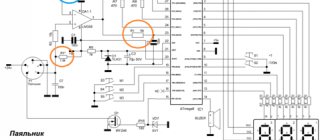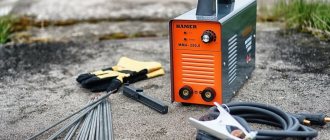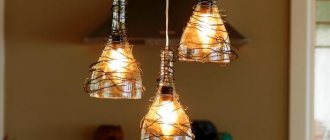Have you ever thought how great it would be to be able to see in the dark? This can be done using night vision goggles.
Unfortunately, a true night vision device, even of the simplest design, can cost hundreds of dollars for the optics alone. This is a very expensive technology. However, there are alternative methods of seeing in the dark: there are various night vision programs for gadgets, and children's toy stores sell toy spy binoculars. They use low-end cameras, infrared illumination and an inexpensive display. We will make this type of device with our own hands.
Our device will use parts that can be easily purchased in online stores.
So, let's begin. You don’t have to think that you will get a high-class device. It won't really be able to compete with real night vision devices.
DIY NVD at home
Today we will skip the medieval alchemical method that allows you to make a night vision device with your own hands.
You can easily manage it if you have sulfuric acid and tin chloride stored at home, but the authors consider such an approach dangerous and unreasonable. Today's work plan: we briefly discuss the principle of operation of a night vision device.
We’ll help you collect it, if you can’t sit still, perhaps we’ll make a short excursion regarding the stores: we’ll discuss stale items from the field of hunting equipment.
How to convert infrared rays into visible light or see the invisible?
Once we have created an area of infrared illumination, the question arises: how to detect the IR rays reflected from the target if we cannot see them with our eyes? To do this, you will need a device called an electron-optical converter (EOC). The image intensifier performs the following actions with infrared light:
- Collects infrared radiation emitted by the illuminator and reflected from the target.
- Converts captured light into a stream of electrons.
- Strengthens the flow of electrons using an amplifier (not all image intensifiers have this capability).
- Converts a stream of electrons into light visible to the eye of an observer or recorded by a video camera.
Today, several generations of image intensifier tube designs have already changed. Each subsequent generation gives an increasingly better picture, but the price also increases significantly, which is associated with the use of increasingly complex and expensive components in the design. At the same time, even first-generation converters create an image of quite acceptable quality, suitable for solving many problems.
How it works and resources for homemade NVGs
Our NVD is based on a digital camera, popularly nicknamed a “point-and-shoot.” The electronic content is preserved, since it is capable of transmitting images in real time through the LCD screen. By changing the lens filtration and increasing the camera's sensitivity to the infrared range, as well as equipping the camera body with infrared illumination, we open up new possibilities for a digital camera capable of capturing objects in the near-infrared range. Also, such a device can be used as a thermal imager, distinguishing heated objects, for example, an unattended iron, electric stove or kettle. Materials:
- Digital camera;
- Button – switch;
- AA AA battery 1.5 V – 2 pcs;
- Wiring, electrical tape.
Tools:
- Soldering iron;
- Screwdriver with replaceable bits;
- Painting knife;
- Hot glue gun;
- Tweezers.
What do you need to make your own night glasses?
To make glasses we need several components:
- A device that captures infrared light . Any camera that has a night mode can play this role. It is clear that the camera should not be too expensive, otherwise its use in the design will be unprofitable. For a night device that lacks stars from the sky, a webcam is suitable, but it will require a little modification. You need to remove the infrared lens from it - an IR wave filter. Now the camera can be used in night mode using infrared illumination.
- Source of infrared waves . To do this, you can use a ready-made infrared flashlight (the simplest, but most expensive option). If you don’t have enough budget, you can use a regular LED from a TV remote control as IR illumination. Its power is not enough for constructing an image at long distances, but for illuminating, say, a staircase or other similar space, the light will be quite enough.
- Power supply . It is desirable that it be sufficiently scarce and provide decent autonomy for the device. AA and AAA batteries or accumulators look good in this role. For more complex stationary devices, you can also take care of a device that provides power from a household electrical network.
- Accessories are the last group of things needed to create homemade night vision goggles. They are not directly involved in creating the image, but they protect the circuit from dust and dirt or increase the comfort of use. It is worth taking care of some kind of pencil case as a case and a bracket for attaching to glasses or a helmet-mask from a headlamp. The bracket can be made, for example, from parts of a children's metal construction set.
Step-by-step instruction
After all the materials and tools have been prepared, you can proceed directly to assembling the night vision device. To do this you need to follow these simple instructions:
- Carefully open the cardboard box and determine the appropriate dimensions of the future NVG, based on the dimensions of your smartphone or iPhone. To create a standard night vision device using a simple or black pencil, you need to mark 2 rectangles measuring 22.5 cm by 5 cm on cardboard. These rectangles are cut out with a stationery knife and bent 90 degrees, while retreating 15 cm from the edge. Thus, we get 2 blanks in the shape of the letter “G”.
- Cut out an internal partition from cardboard with a 2 cm gap on one side. Then the partition is glued 1 cm from the edge of the rectangle. The slot hole on the outside is covered with a cardboard cover measuring 2 cm by 7.5 cm. Next, cut out the second partition, which will correspond to the internal dimensions of the case. On the side of this partition you need to cut a rectangle 4 cm by 3 cm, and in the middle - a slot of 0.5 cm by 4 cm. A hole is cut out on the side of the case for the switch.
- Try on your smartphone and connect all the parts of the box. If desired, pre-paint the cardboard pieces black. When installing the inner bottom, you need to make sure that the phone is completely recessed. In this case, a piece of cardboard should cover the camera. This will allow the smartphone to be held in place.
- Once the box is ready, take the batteries and connect them in series together, making a tap for the switch. Glue the batteries into the box body.
- Mount a switch on the side panel, diverting 2 wires to power the backlight. When the switch is on, 12 V should be supplied to the wiring. When off, the voltage should be zero.
- From old remote controls, unsolder the infrared LEDs, connect the resistors and then connect them in parallel with each other. A short wire is removed to supply power, and the backlight is connected.
- Insulate the wires with electrical tape and close the lid.
After all the steps have been completed, all that remains is to check the device in operation. To do this, insert your smartphone inside and turn on the camera in the dark. If everything was done correctly, then when you turn on the LEDs, even in pitch darkness you will be able to see different objects at a short distance.
Such a homemade night vision device will not be suitable for long-distance vision, but at a distance of several meters you will be able to clearly see objects, take a photo or shoot a video.
What you will need
Making a night vision device at home is not difficult and will only take a couple of hours. To create a device, the first step is to prepare all the materials and tools that will be needed later. Materials you will need:
- 12V battery (you can take 4V batteries and connect them in series with each other);
- 5 infrared LEDs (taken from unnecessary remote controls for TV, DVD, music center, and so on);
- several 270 Ohm resistors;
- wiring for connection;
- compact switch;
- insulating tape;
- hot glue;
- small cardboard box.
To give the future night vision devices an aesthetic appearance, black paint may also be needed. For assembly you need to prepare the following tools:
- stationery knife;
- glue gun;
- wire cutters;
- pliers;
- soldering iron
Additionally, you should prepare a pencil, brush and ruler.











